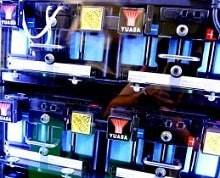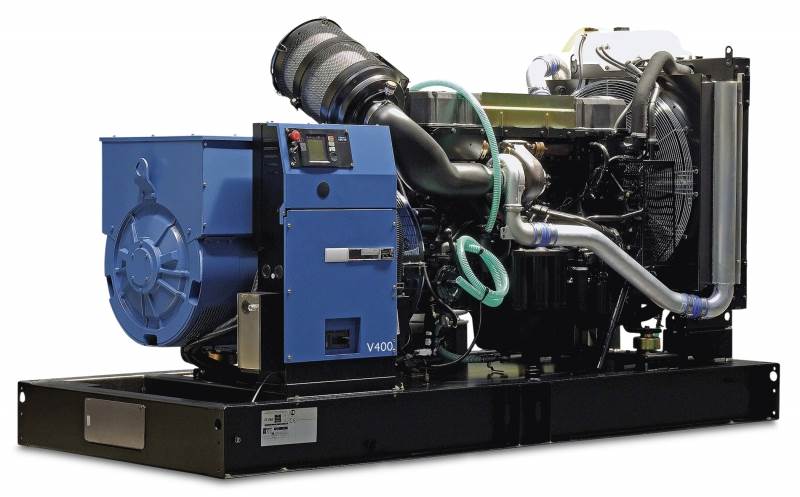- Contact 0870 350 7767
- |
- Advertise
Director's Blog: So just what exactly is a UPS?
 News and PR from Kohler Uninterruptible Power - Published 03 August 2015
This blog written by Alan Luscombe, UPS Ltd Director, explains what a UPS is, as well as putting the various risks averted by UPS systems into perspective.
News and PR from Kohler Uninterruptible Power - Published 03 August 2015
This blog written by Alan Luscombe, UPS Ltd Director, explains what a UPS is, as well as putting the various risks averted by UPS systems into perspective.The trouble is, not only do UPS systems have another (more important) role, but if youÂre only considering implementing a UPS on the basis of disaster recovery, it probably wonÂt happen until itÂs too late. You see, as a species weÂre terrible at assessing risk.
A UPS, or uninterruptible power supply, is a device that sits between the mains power supply and your critical systems, performing two primary functions:
1. Providing emergency power in the event of an outage
2. Filtering disturbances from the mains power supply to provide safe, clean power
Outages are not the only thing that can go wrong with your mains power supply. Here are some of others:
· Spikes Short, rapid fluctuations in voltage, ranging in intensity from a malfunction at the power company to a locally grounded lightning strike
· Electrical noise A Âcatch-all term for interference in the power supply lines, which might be caused by load switching, cable faults or radio frequency interference (RFI)
· Surges A sustained voltage increase, usually occurring after a large load is switched off
· Sags A drop-off in the mains supply, usually occurring when a large load is switched on
· Brownouts Identical to sags, but with much longer duration; these occur when the mains supply is unable to cope with the current load demand
· Harmonics Current and voltage distortions caused by loads such as computers, photocopiers and laser printers, which pull current from the mains supply in large peaks
These minor fluctuations are often more damaging to your equipment than a complete outage would be. ItÂs easy to imagine the implications of an outage on your organisation  Loss of business, inability to trade, data loss or corruption, and so forth.
The phenomena described above can easily result in a reduced lifespan, or even failure of your critical systems.
In the UK the average time between mains power failures is 10,000 hours, or 445 days. By contrast, the average time between disturbances is as low as 50 hours in some areas. Combine these figures with the damage caused by disturbances, and we find that outages are not only by far the least frequent of power issues affecting your systems, theyÂre almost always the least expensive.
Hopefully this article has helped to explain what a UPS is, as well as putting the various risks averted by UPS systems into perspective. The headline that youÂll still be able to work (or at least safely shut down your equipment) in the event of an outage is a good one, but I canÂt emphasize strongly enough the importance of protecting your business against power disturbances.

 I canÂt emphasize strongly enough the importance of protecting your business against power disturbances.
I canÂt emphasize strongly enough the importance of protecting your business against power disturbances.

Other announcements from Kohler Uninterruptible Power
-
Understanding your UPS batterys amp-hour rating
If youre specifying a UPS system, then its absolutely essential that you truly understand its battery autonomy; for how long will it support the load if the AC supplies fail?
14 May 2018
-
Keeping UPS availability high
When data centre operators invest in UPS systems, its for one purpose only; to maximise power availability for their facilitys ICT equipment.
14 May 2018
-
Future trends for UPSs
What does the future hold for UPS technologies and systems? We asked Alan Luscombe, Director at UPSL, for his views, as summarised below.
02 Nov 2017
-
UPS, heal thyself
UPSs exist solely to deliver clean, uninterrupted power to their critical load but their ability to do so is entirely bounded by their resilience to failure of their own components or subsystems.
31 Aug 2017
-
Maintaining UPS efficiency when the load size diminishes
Modular UPS technology, as implemented in systems such as UPSLs PowerWAVE 9500DPA, is now being exploited in a smart solution that maintains UPS efficiency even when the UPS load is severely reduced.
30 Aug 2017
-
Is it time to consider Lithium-ion batteries?
Why hasnt the industry adopted lithium-ion solutions with greater enthusiasm, and is this likely to change? We can answer these by looking at factors relating to both lead-acid and lithium-ion bat.
30 Aug 2017
-
How UPS efficiency can contribute to data centre PUE
Improving UPS efficiency can help to better data centre PUE performance. The article discusses the options for this available to UPS operators who invest in the right, transformerless technology UPSs.
30 Aug 2017
-
The Internet of Things, data centres, and UPSs
The Internet of Things (IoT) is gaining traction at an accelerating pace; Gartner has predicted 26 billion connected devices by 2020, while others are calling even higher numbers.
30 Aug 2017
-
Choosing a generator for data centre power protection
UPS generators are no longer just a backup plan. Today, they are considered a vital component of a companys power protection policy, as sizing UPS batteries for protracted power blackouts is simply uneconomic and impractical. In choosing a generator for a data centre or other critical IT load application, a number of factors must be considered. These include the generators key components, environmental issues and the qualifications of the suppliers as well as compatibility with the UPS to be supported. In this article, Alan Luscombe, director at Uninterruptible Power Supplies Ltd., a Kohler company, discusses how generators work with UPSs, and the factors you must consider when choosing a generator as part of your power protection policy.
23 Jul 2015







